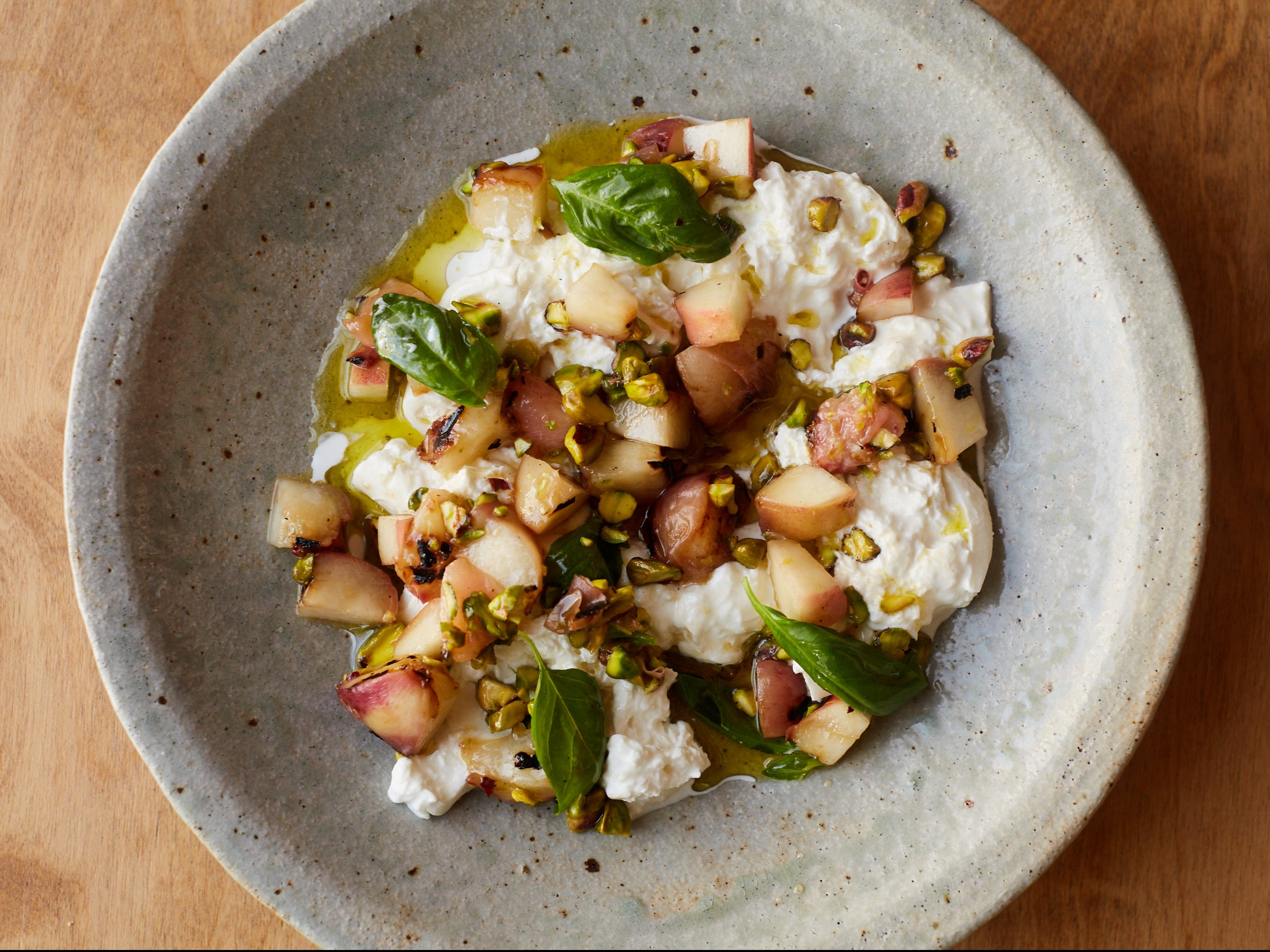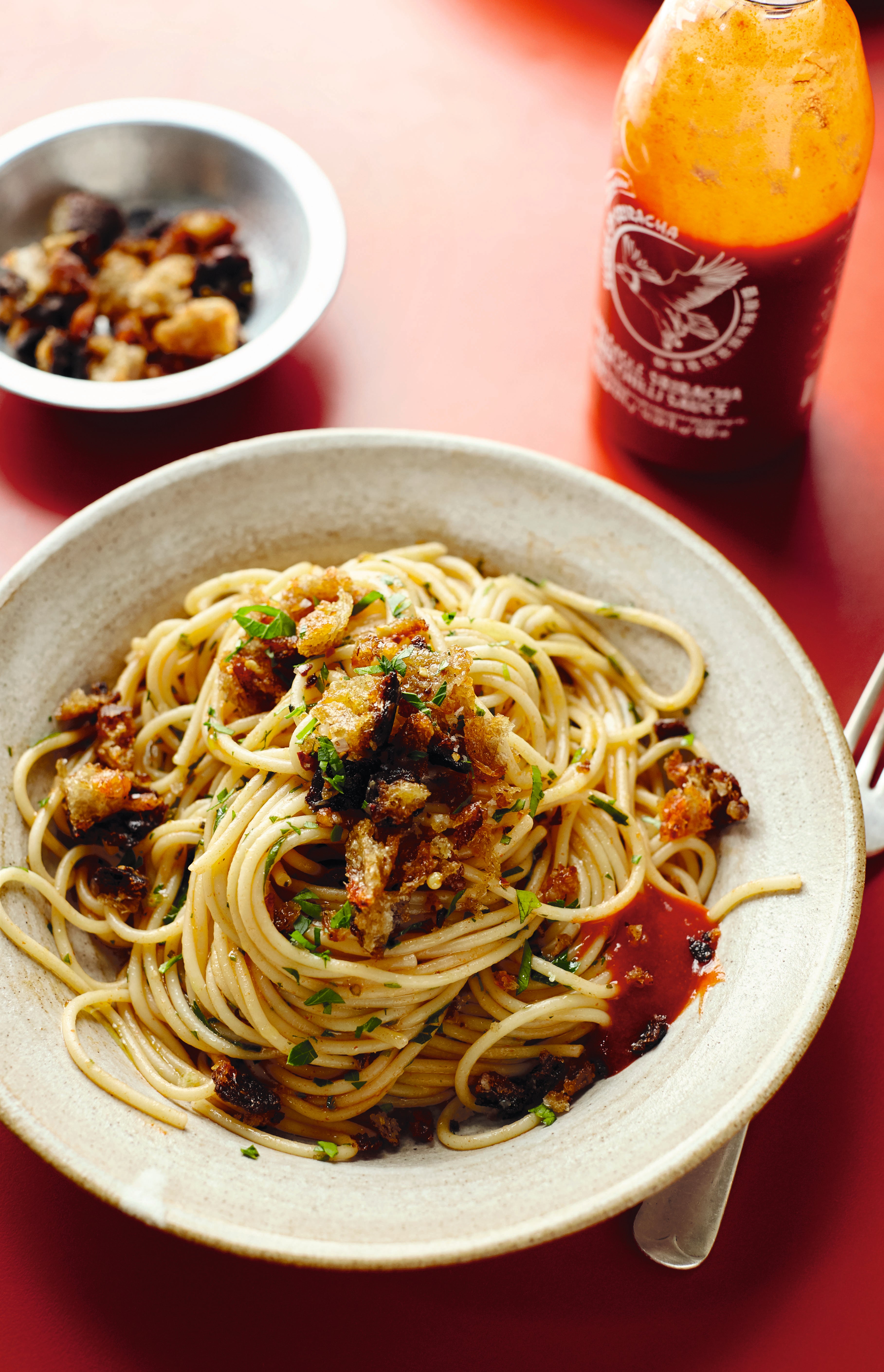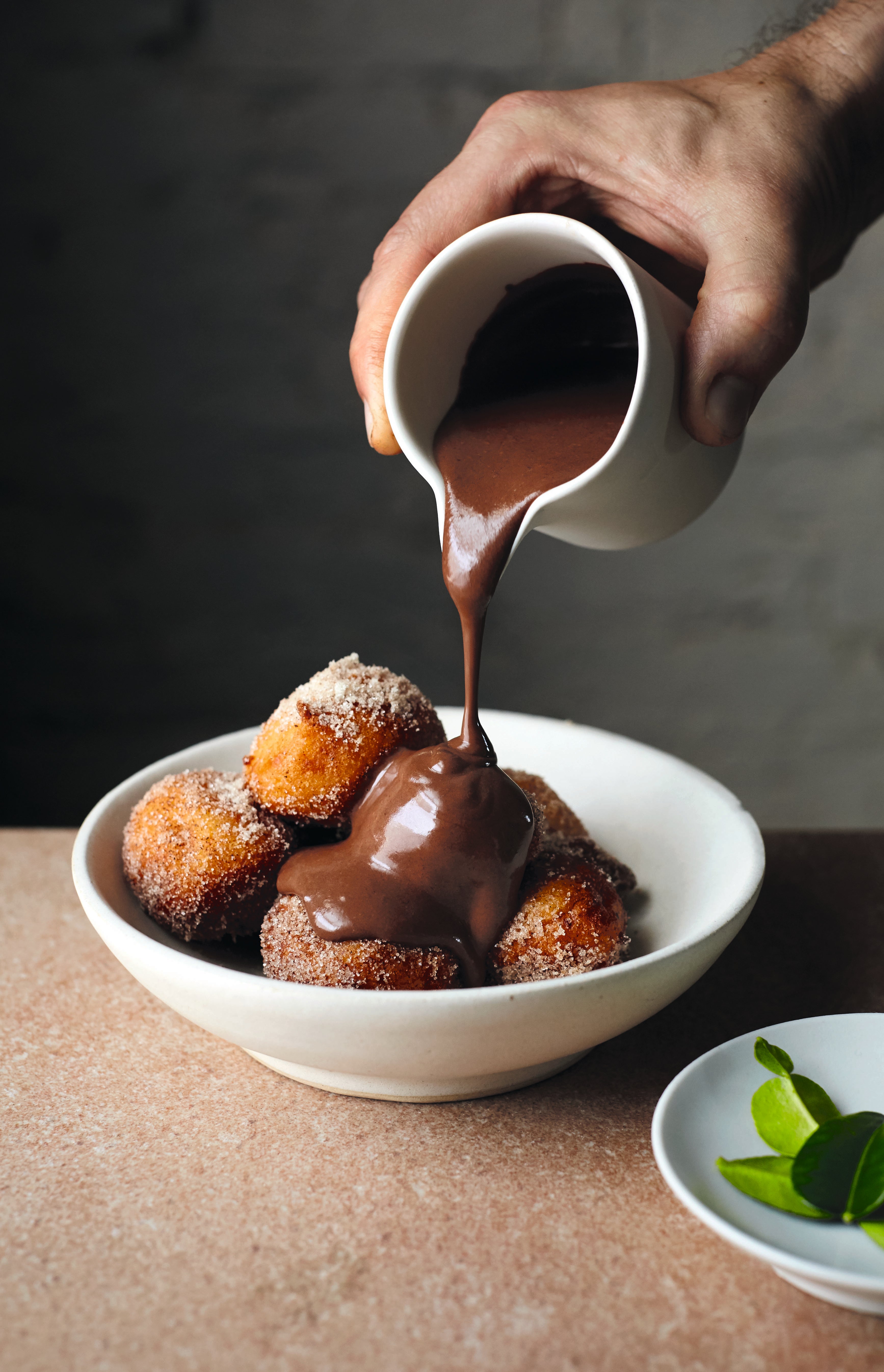We all get cravings – this cookbook tells you exactly what to eat to satisfy them
If, like Ed Smith – and this food and drink writer – you spend most of your time wondering what to eat next, his new book is for you, writes Hannah Twiggs


We’ve all googled “What should I eat?” at one point or another. Sometimes it’s because it’s been a long day and we simply can’t be bothered to think of something. Other times it’s because we can’t quite work out what it is we fancy.
What we really need in those moments is a giant index of recipes arranged by “flavour, to suit your mood and appetite”. Well it just so happens that’s the tagline for Ed Smith’s new book, Crave, published on 19 May by Quadrille.
One of the main reasons we get stumped about what to eat, Smith writes in the intro – and I happen to agree wholeheartedly – is because sometimes “there’s too much choice”. You might argue that 100 recipes is still too much choice, but Smith has cleverly broken them down into six flavour profiles. Think of it as essentially what to eat, when and why.
You’ve got fresh and fragrant, chilli and heat, tart and sour, curried and spiced, rich and savoury, and cheesy and creamy, with pseudo-scientific explanations for why you might dip into each chapter. For example, we all know a spice addict but did you know you crave something fresh and fragrant not just in warmer climes but when you’re a bit sad, slovenly and need a boost to your blood sugar? You might opt for something tart and sour when you need a pick-me-up. Science! (Or not, as Smith hastily adds.)
Some cravings need instant satisfaction. There are recipes for that, but also for when you need a bigger, more complex meal later on in the week. It’s not so much Smith’s intuition for flavour combinations that make this book one you absolutely need on your shelf, but his refreshing approach to planning your meals – or, perhaps, not planning them at all.
“What’s the weather like? How was your day? Have you been dreaming about your last trip abroad? And are you now hungry?” Smith writes. “Before you stare into your fridge, flick desperately through cookbooks, mindlessly browse the internet, or simply throw the first thing you can at your rumblings, just focus on the key question: ‘What flavours am I craving right now?’”
Well, here’s my selection on this overcast Monday in May.
Burrata with burnt peaches and basil
This mix of burnt peach, basil, pistachio and burrata feels like peak summer on a plate; the perfumed fruit and herbs relax so effortlessly into cold, creamy fresh cheese. Indeed it is something you’ll most likely want to eat if the weather matches, or your mind is in holiday mode. A low-effort high-reward assembly, this works well as a starter or a meze-style dish to lazily graze on. The peaches need to be ripe enough to be flavourful, but not so ripe that they’re mushy and can’t be grilled.
Makes: 2 servings (scales well to serve 4, 6 or more)
Ingredients
2 flat peaches or 1 large white peach, pitted and quartered
4-5 tbsp extra virgin olive oil
6-8 basil leaves, largest leaves roughly torn
20g shelled pistachios, roughly chopped
Juice of ¼ lemon
125g burrata
Flaky sea salt and ground black pepper
Method
Place a griddle pan or heavy-bottomed frying pan (skillet) over a high heat and allow it to warm for 3-4 minutes.
Brush the peach flesh with a little oil, then place on the (near-smoking) pan and leave to colour for 2-3 minutes. Use tongs to turn the peach segments and char any other cut surfaces, then transfer them to a chopping board. Chop into 1-2cm (½-¾ inch) dice.
Put the diced peach into a mixing bowl. Sprinkle the basil leaves over the peach, then add 3 tbsp of the olive oil along with the pistachios, lemon juice, a pinch of sea salt and a couple of grinds of black pepper. Mix well.
Place the burrata in the centre of a plate, using a sharp knife or scissors to open it up, then spread it out a little so the middle oozes out. Spoon the peach mixture over the top, and drizzle with the remaining olive oil.
Sriracha and lemon linguine with chilli pangrattato

Cross-fertilisation of cuisines might not be to everyone’s taste, but this tangle of classic Italian chilli, lemon and garlic spaghetti with pangrattato, power-splurged by southeast Asian Sriracha, does work well. Indeed the addition of a pre-made, moreish hot sauce is an incredibly efficient way of layering pasta and breadcrumbs, not just with heat, but with a sweet, garlicky, sticky tang that neither fresh nor dried chillies can add on their own. It’s an excellent way to quickly quench a heat craving.
As a relatively important aside, your Sriracha could be hotter than mine (I use Flying Goose or Tabasco versions), and indeed our tolerance to chilli may well differ too. So give these quantities a go, but maybe make a note as to whether you need more or less fire the next time.
Makes: 2 servings
Ingredients
200g dried spaghetti
3 tbsp extra virgin olive oil
2 cloves garlic, very finely sliced
15g fresh parsley, stalks and leaves separated, both very finely chopped
5 tbsp Sriracha
Juice of ½ a lemon
For the chilli pangrattato:
50g (1¾oz) thick sliced bread (ideally something springy like sourdough, ciabatta or focaccia)
3 tbsp light olive oil
2 cloves garlic, minced
1 heaped tbsp Sriracha
½ tbsp dried chilli flakes
Heavy pinch flaky sea salt
Method
Make the chilli pangrattato first. Tear and pick the bread into little fingernail-sized pieces (including the crusts – don’t discard those).
Put a small, heavy-bottomed frying pan (skillet) over a medium heat and add the oil. Allow this to heat up a little, then fry the breadcrumbs for 3-4 minutes so they begin to turn golden at the edges. Add the garlic, stir and cook for 20 seconds, then drop in the Sriracha before the garlic browns. Stir and shuffle the pan, cook for an additional 30 seconds, sprinkle over the chilli flakes, stir one more time, sprinkle generously with salt, then transfer to a cool plate until needed. The crumbs should be a rust colour, crisp but also still a little bouncy.
Cook the spaghetti in well-salted, boiling water as per the packet instructions (likely to take around 10 minutes).
Pour the extra virgin olive oil into a wide, heavy-bottomed sauté pan or saucepan and place this over a low to medium heat. Add the garlic slices and let these warm through for 3-4 minutes, to soften, mellow and flavour the oil, but not to fry or colour. Add the parsley stalks and cook for 1 minute more, then add the Sriracha and remove the pan from the heat. Shake the pan to mingle the hot sauce and oil, then after 30 seconds squeeze in the lemon juice.
Around now your spaghetti will be ready. Drain, reserving the cooking water, and transfer the pasta to the saucepan with the Sriracha and co.
Return this to the stove and place over a low heat. Add 4-5 tbsps of cooking water and toss the pasta through the sauce.
Add the chopped parsley leaves, maybe a touch more cooking water, and mix one last time before decanting onto two plates or into bowls, and scattering over the sticky and spicy breadcrumbs.
Ricotta fritters with coconut and makrut lime chocolate sauce

This is a twist on Italian bombolini (ricotta doughnuts), using flavours from elsewhere to add an aromatic punch – coconut, makrut lime leaves, lime zest and cinnamon. Even if you’re not accustomed to deep frying, they make for an easy and memorable finish to a meal.
The sauce requires coconut cream, which is typically listed as including around 70-80% coconut solids (so not ‘milk’, ‘light milk’, ‘creamed coconut’ or ‘water’). The quantity made will be more than you need, but in this instance I think it’s better to have too much than too little; use any excess as you would Nutella (e.g. on pancakes), or reheat then dilute to make a spiced-coconut hot chocolate.
Makes: 4 servings
Ingredients
2 large eggs
Finely grated zest of 1 lime
120g (4¼oz) caster (superfine) sugar
250g (9oz) strained ricotta
80g (2¾oz) plain (all-purpose) flour
2 tsp baking powder
½ tsp flaky sea salt
2 tsp ground cinnamon
For the sauce:
300ml (1¼ cups + 1 tbsp) coconut cream (ideally 80% coconut solids)
12 fresh makrut lime leaves
100g (3½oz) dark chocolate (70% cocoa solids), broken into small pieces
4 tsp golden caster (superfine) sugar
½ tsp flaky sea salt, plus more to garnish
Method
Put the eggs in a mixing bowl and quickly beat them with a whisk, then whisk in the lime zest and two-thirds of the sugar. Using a large spoon or spatula, stir in the ricotta (it should look like lumpy wallpaper paste).
In a separate bowl, combine the flour, baking powder and salt. Fold this into the ricotta mix, again using the spoon or spatula. Cover and refrigerate the batter until required (anywhere between 1 and 12 hours is fine). If the mixture splits over that time just beat it together again.
Meanwhile put the coconut cream and makrut lime leaves in a small saucepan over a low to medium heat until the cream reaches a moderate simmer (try to avoid it boiling). Reduce the heat to as low as possible for 5 minutes, then remove from the heat and leave to infuse for an hour.
Return the saucepan to a low to medium heat. When a few small bubbles appear, pick out the lime leaves and add the chocolate and sugar.
Wait for 30 seconds then encourage the chocolate to melt into the cream, stirring until you have a smooth and silky sauce. Add the salt, stir again and leave somewhere warm until required. You can do this in advance – refrigerate then gently reheat shortly before you need it, serving the sauce slightly above room temperature for optimum viscosity.
When ready to eat, combine the cinnamon and the remaining sugar in a bowl or small roasting tray. Line a second bowl or tray with a paper towel.
Set a deep-fat fryer to 160°C/350°F (if you don’t have a deep-fat fryer, fill a saucepan 5-7cm/2-2¾in deep with a neutral cooking oil and heat to the same temperature), then drop 1 dessertspoonful (about the size of a walnut) of batter into the saucepan. Fry for 3½-4 minutes, ensuring both sides are golden. Cut the fritter in half to check the inside is cooked (it should be soft but still cooked all the way through, not molten), then adjust the cooking time accordingly.
Fry the remaining mix in two to three batches to fit your fryer or pan. Transfer each batch of fritters to the paper-lined bowl or tray to absorb most of the oil, then roll them in the cinnamon sugar.
Serve as soon as the final batch has been dusted, with the sauce either in little dipping pots, in puddles on a plate, or with it drizzled lavishly over the fritters, plus a few flakes of salt.
Extracted from ‘Crave: Recipes arranged by flavour to suit your mood and appetite’ by Ed Smith (Quadrille, £25; photography by Sam A Harris)
Join our commenting forum
Join thought-provoking conversations, follow other Independent readers and see their replies
Comments
Bookmark popover
Removed from bookmarks